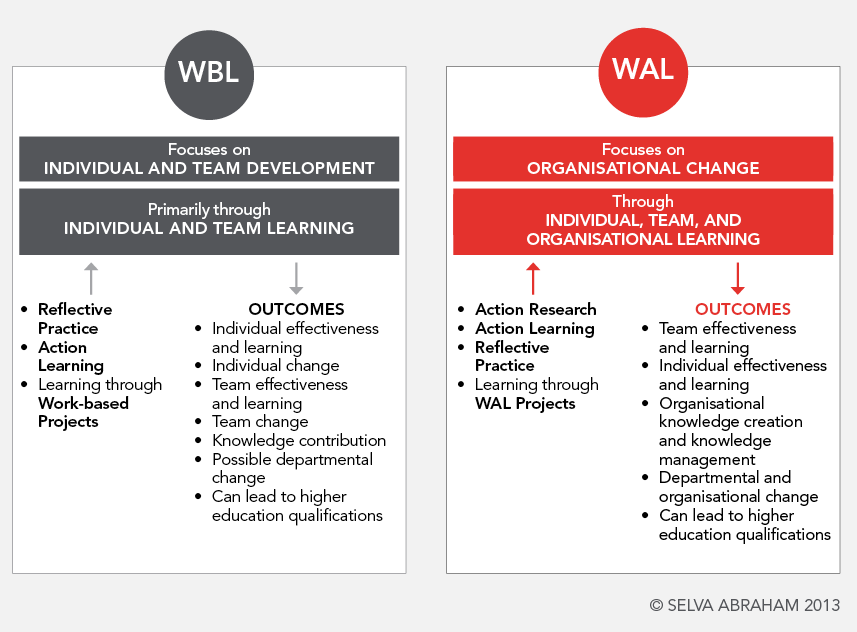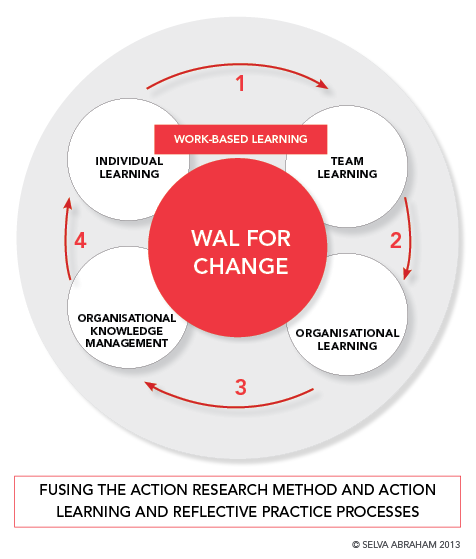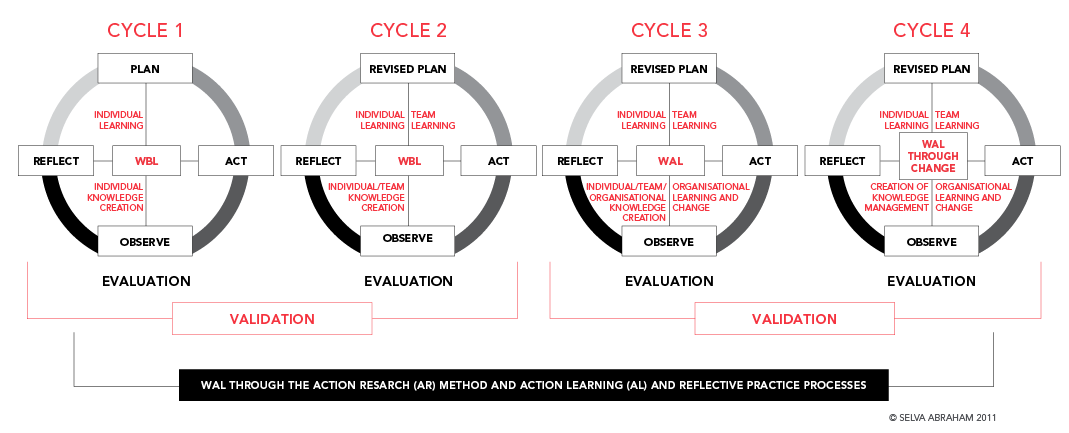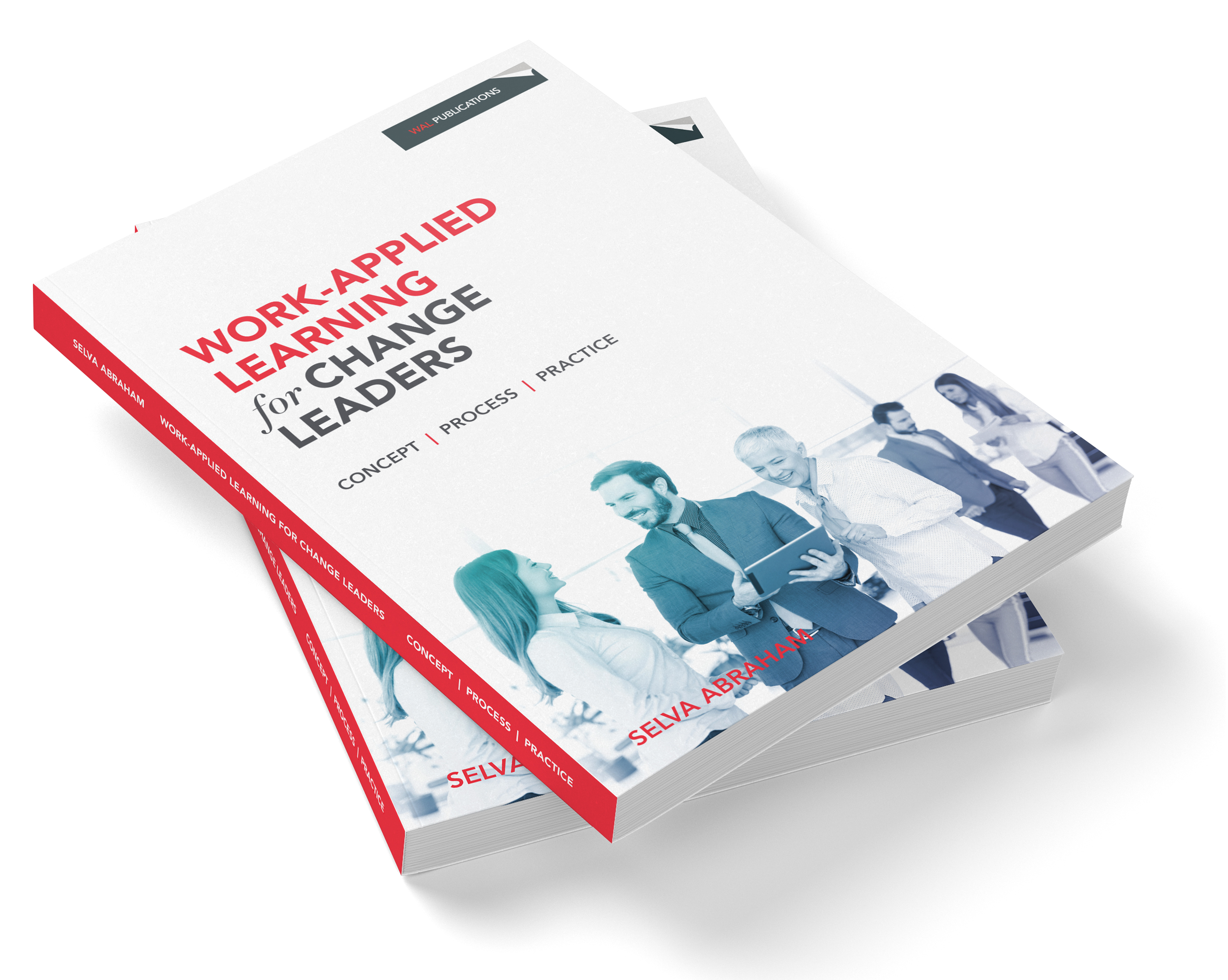The Work-Applied Learning (WAL) model recognises the workplace as the crucible of learning for change. It has been specifically developed for managers to learn, reflect, introduce change and be effective in their organisations or communities.
The video on the right captures the spirit of the Work-Applied Learning concept and process, whilst the videos below provide examples of how Work-Applied Learning has been utlised and how to has positively impacted organisations and workplaces.
Work-Applied Learning is an extension of Work-Based Learning (WBL). Whereas WBL focuses on individual and team learning, WAL includes the features of WBL, as listed below, and goes further to enable organisational learning, resulting in the creation and management of organisational knowledge and change.
Work-Based Learning:
- focuses on learning through work oriented projects
- is often a collaborative activity
- is often trans-disciplinary rather than based upon the traditional subject disciplines developed and taught
- is a practical yet often higher level cognitive process
- is primarily learnt by working, not just through reading or observing work
- is essentially learner-centered where the leaders and managers lead the facilitation at the workplace in contrast to being lecturer-led and classroom based
- involves the leaders and managers in learning teams and guidance from the facilitator
- provides opportunities for critical analysis, reflective thinking and improving professional practice
- involves knowledge creation and utilisation of collective activities where learning becomes everyone’s job
- involves the integration of business and management concept and interpersonal and intergroup skills with practice
- can lead to attainment of professional practice certifications
Diagram 1 shows a comparison between WBL and WAL. While learning in the WBL model almost exclusively occurs through work-based projects and reflective practice, the WAL model facilitates learning through action research and action learning, in addition to reflective practice. Both models enable individual effectiveness and departmental change.







